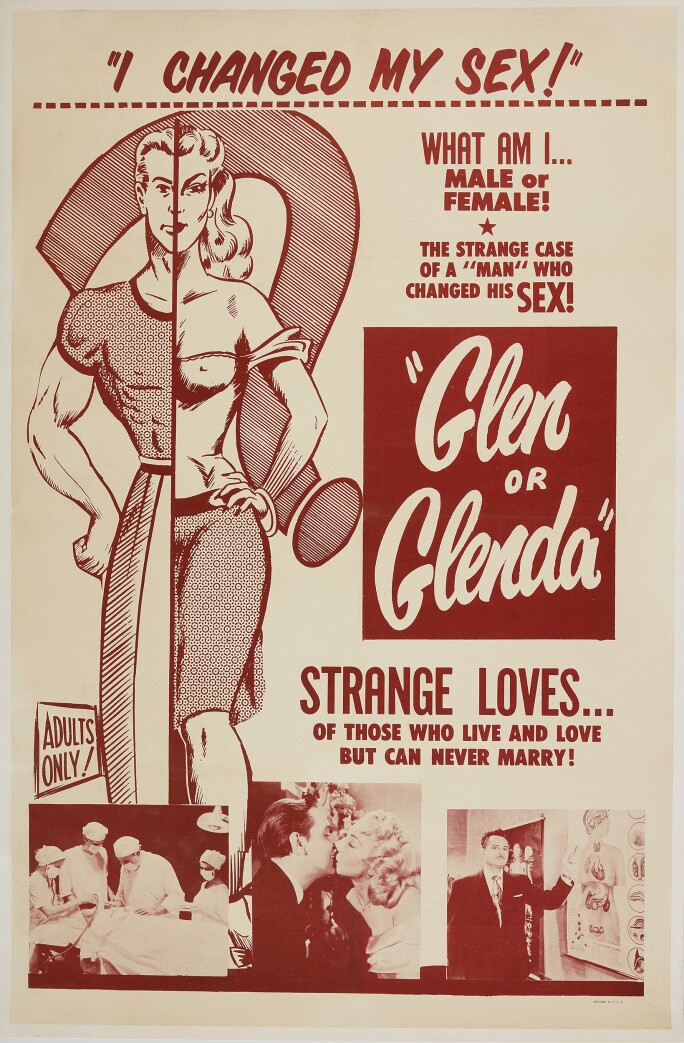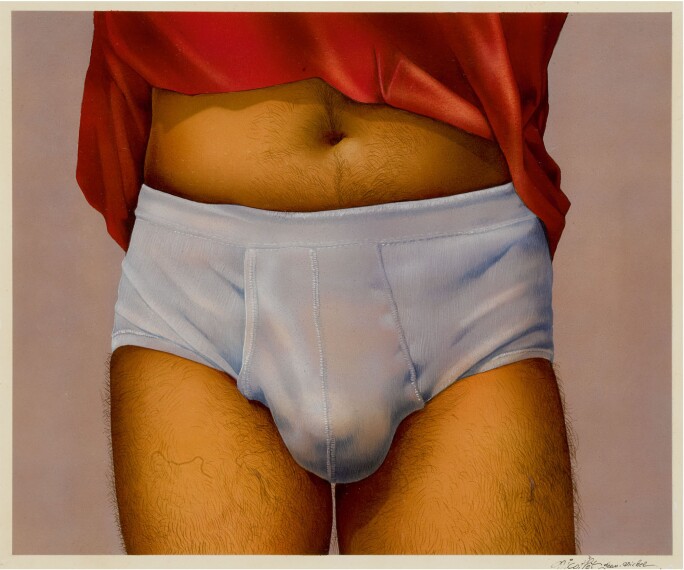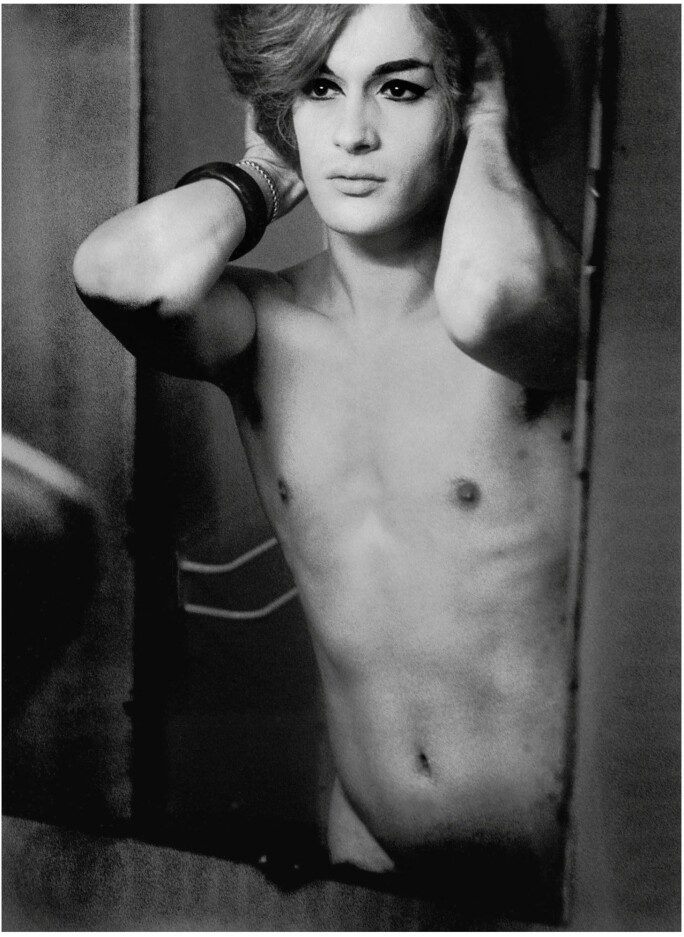T his year marks the 50th anniversary of the Stonewall Riots, a defining event in the fight for LGBTQ+ equality. Fifty years ago, activists stormed the streets of New York demanding rights for queer folks. Their work and sacrifices changed the narrative of the movement – but more remains to be done. Progress isn't a straight line – it's a battle that dips and turns, stopping and accelerating until finally we see change in action.
A portion of Sotheby’s buyer’s premium from the BENT. auction will be donated to The Center, providing programs for health, wellness and connection for New York’s LGBTQ community. Explore ten highlights from the upcoming sale, which features a range of notable LGBTQ+ artists and subjects.
1) A Fly on Andy Warhol's Wall
Chanel after-bath spray, Alosun After Tan lotion, Halston Shave Foam – this photograph by David Gamble gives you a rare look at Andy Warhol's essential beauty products. A print of this image of Warhol’s medicine cabinet, filled with prescription drugs and personal hygiene products, was included in the 2012 exhibition Regarding Warhol: Sixty Artists, Fifty Years at the Metropolitan Museum of Art. There is another print in the collection of The Andy Warhol Museum in Pittsburgh.
2) Identity Play
Directed by the notorious Edward D. Wood Jr. (of “Plan 9 From Outer Space” fame), “Glen or Glenda” is a semi-autobiographical docudrama about cross-dressing and gender identity, which follows several characters as they navigate personal relationships and medical decisions related to their identities. The film was loosely inspired by the gender confirmation surgery of Christine Jorgensen, who made headlines in the early 1950s as the recipient of the first “sex change.” The issue was also a personal one for Wood, for whom cross-dressing, or drag, was an important facet of his identity.
3) With love, from Virginia Woolf
This fine discursive letter was written at the end of Virginia and Leonard Woolf’s motor trip through southwestern France, in the spring of 1931. Writing to her nephew and future biographer, Quentin Bell, Woolf gives news of her travels and remarks on her conversation with her elderly French housekeeper:
“It’s all very well, Dearest Claudian, telling me to write instantly, but I have only my natural hand available which you can’t read. Also, it thunders & lightens, & the old half-wit grandmother of the proprietor turns to me for confidence. Rassurez-vous, Madame, I say from time to time, those whom the Gods love die young. She thinks this a great joke….”
4) Awake, Alive

5) The Briefing
Jean-Michel Nicollet created Briefs as an illustration for the French edition of Playboy in 1974. The image became well-known in the US when it published as a note card by Fantasy Graphics. (A copy of the note card is attached to the backing of the frame.)
6) For Whitman's Calamus Lover
This is the scarce first issue of the fourth edition, including first-edition sheets from the first editions of Drum-Taps, Sequel to Drum-Taps, and "Songs Before Parting," all with separate title-pages and pagination. Even more unique is the inscription by Whitman to his "Calamus Lover," Peter Doyle on the front flyleaf: "Peter G. Doyle, from Walt Whitman, Washington, April 29, 1868." Whitman probably met Peter Doyle in Washington, DC, sometime in early 1865 while Doyle was a streetcar conductor, and, despite a number of dissimilarities – Whitman was 45, an accomplished literary figure, and an ardent Unionist, while Doyle was 21, virtually illiterate, and a Confederate veteran – they remained friends, lovers and correspondents for many years.
7) Feline Dreams

Claude Cahun was a writer, actress, artist and outspoken member of the Parisian lesbian community between the two world wars. In her series of inventive self-portraits, she embodied a wide array of masculine and feminine personas, often including her cat in the fanciful scenarios. In this seductive image, her feline friend takes center stage as it sunbathes on a miniature canopied bed.
8) Bacon in Triptych
9) Let the Games Begin

10) Mirror, Mirror
In 1959, Swedish photographer Christer Strömholm moved to Paris and settled near Place Blanche. The neighborhood’s red-light district was home to many transsexuals who became his close friends and the subject of his series Les amies de Place Blanche. He stayed in the same hotels that they called home, adopted their schedule, and observed them through the lens of his Leica as they dressed and did their makeup before going out to the street each evening. His images offer intimate portraits of individuals – Soraya at Hôtel Pierrots, Carla/Wanda fixing her hair, Nana being kissed by a man – by shooting in ambient light and carefully framing his close-up compositions.
"The only thing they demanded was to have the right to be themselves. . .to have the right to live their own lives, to be responsible, to be at ease with themselves," wrote the photographer when he published a book of the series in 1983. It is believed that the photographs offered here are the first prints from Les amies de Place Blanche to be offered at auction in the United States.









